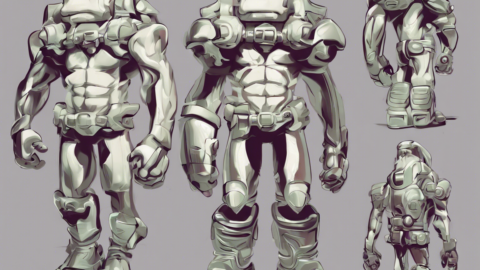Introduction:
Jim Budz is a contemporary American artist known for his vibrant and mesmerizing artwork that transports viewers into a world of color and imagination. Born and raised in New York City, Budz’s artistic journey began at a young age, fueled by his passion for painting and drawing. Over the years, he has developed a distinct style that seamlessly combines abstract forms, vivid hues, and intricate patterns to create visually stunning pieces that captivate audiences around the globe. In this article, we will delve into the art of Jim Budz, exploring his unique approach, inspirations, and the impact of his work on the art world.
The Artistic Process:
At the core of Jim Budz’s work is his experimental and intuitive artistic process. He often starts with a blank canvas, allowing his creativity to flow freely without preconceived notions or sketches. Budz embraces spontaneity and embraces mistakes as opportunities for exploration and discovery. His paintings evolve organically as he layers colors, shapes, and textures to build a rich visual tapestry that invites viewers to immerse themselves in each piece.
Color Palette:
One of the defining characteristics of Jim Budz’s art is his bold and expressive use of color. His palette is a harmonious blend of vibrant primary hues, pastel tones, and deep, rich shades that create a sense of energy and movement within his paintings. Budz’s mastery of color theory is evident in his ability to evoke different emotions and moods through his strategic use of warm and cool tones, contrasts, and gradients. Each color choice is deliberate and serves a specific purpose in conveying the overall aesthetic and narrative of the artwork.
Abstract Forms and Textures:
In addition to his dynamic use of color, Jim Budz incorporates abstract forms and textures into his work to add depth and visual interest. His paintings often feature geometric shapes, fluid lines, and intricate patterns that interact with the color palette to create a sense of dynamism and balance. Budz’s manipulation of form and texture gives his art a tactile quality, inviting viewers to engage both visually and tactilely with the surface of the canvas.
Inspirations and Influences:
Jim Budz draws inspiration from a wide range of sources, including nature, music, urban landscapes, and cultural diversity. His diverse interests are reflected in the eclectic mix of styles and motifs that populate his artwork, from organic shapes reminiscent of flora and fauna to rhythmic patterns inspired by music and dance. Budz also cites the works of modern masters such as Wassily Kandinsky, Jackson Pollock, and Piet Mondrian as influential in shaping his artistic sensibilities and approach to abstraction.
Impact and Reception:
Over the years, Jim Budz’s art has garnered critical acclaim and a devoted following among collectors and art enthusiasts. His work has been exhibited in galleries and art fairs across the United States and internationally, earning praise for its innovative use of color, form, and texture. Budz’s ability to evoke emotion and curiosity through his abstract compositions has resonated with viewers of all ages and backgrounds, making his art accessible and engaging to a wide audience.
Conclusion:
In conclusion, Jim Budz is a visionary artist whose vibrant and multifaceted work transcends boundaries and challenges conventions. His commitment to exploration and experimentation, coupled with his bold use of color and form, has established him as a pioneering force in contemporary abstract art. Whether you are a seasoned art aficionado or a casual observer, experiencing the art of Jim Budz is a journey into a colorful world filled with beauty, wonder, and endless possibilities.
FAQs:
- What mediums does Jim Budz work with?
-
Jim Budz primarily works with acrylic paints on canvas, utilizing a variety of brushes and tools to create his intricate compositions.
-
How does Jim Budz come up with the titles for his artwork?
-
Budz often derives titles for his pieces from poetry, music lyrics, or personal experiences, seeking to imbue each artwork with an additional layer of meaning and connection.
-
Are Jim Budz’s paintings available for purchase?
-
Yes, Jim Budz’s artwork can be purchased through select galleries, online platforms, or directly from the artist’s studio.
-
Does Jim Budz take on commission work?
-
While Jim Budz primarily focuses on creating original pieces for exhibitions and galleries, he occasionally accepts commission work depending on his schedule and artistic vision.
-
How has Jim Budz’s art evolved over the years?
-
Jim Budz’s art has evolved with time, showcasing a maturation of style, experimentation with new techniques, and a deepening of his artistic vocabulary.
-
Has Jim Budz collaborated with other artists or creative professionals?
-
Yes, Jim Budz has collaborated with musicians, designers, and fellow artists on various projects, exploring the intersection of art and different creative disciplines.
-
What advice does Jim Budz have for aspiring artists?
-
Jim Budz encourages aspiring artists to embrace uncertainty, stay true to their artistic vision, and continue pushing the boundaries of their creativity through persistent practice and experimentation.
-
Are there any upcoming exhibitions featuring Jim Budz’s artwork?
-
Information about upcoming exhibitions and events featuring Jim Budz’s artwork can be found on his official website or through social media channels.
-
How does Jim Budz stay inspired and motivated in his artistic practice?
-
Jim Budz finds inspiration in everyday experiences, nature walks, music, and interactions with other artists, constantly seeking new stimuli to fuel his creative process.
-
What sets Jim Budz’s art apart from other contemporary artists?
- Jim Budz’s art stands out for its masterful use of color, form, and texture, as well as his ability to evoke a sense of joy, wonder, and introspection in viewers through his captivating compositions.
